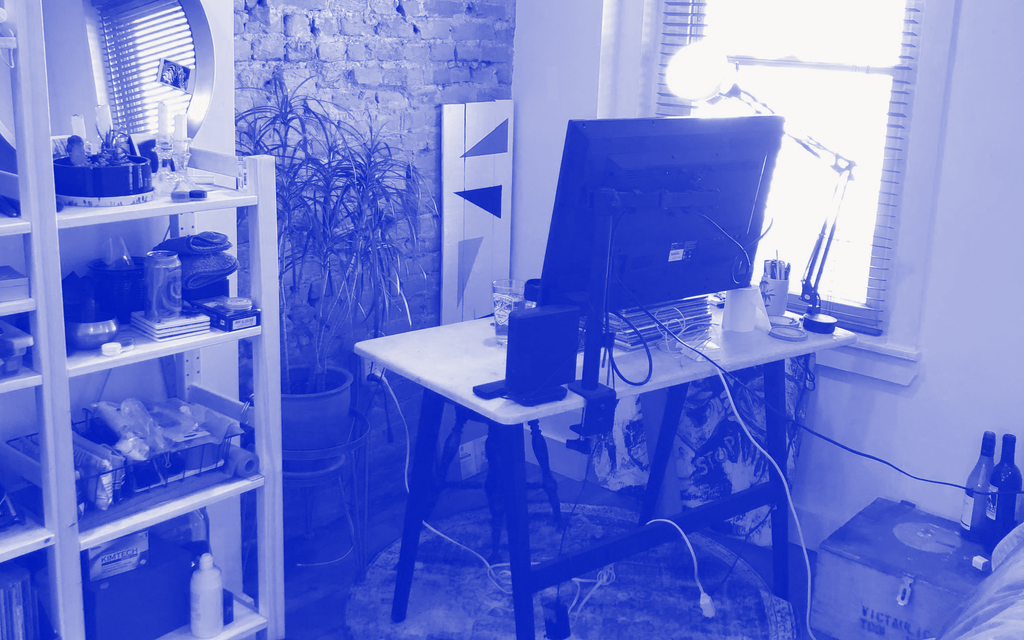on
How to Properly Setup for a Remote Interview
 Image courtesy of Nicolas Coia
Image courtesy of Nicolas Coia
Remote work is can be great, but getting that gig is will likely be harder to do. Without the constraints of geography, the sky is the limit to who can apply. Jobs that otherwise might have only merited 15 or so applicants, now can get hundreds. Therefore it is that much more challenging to standout.
As someone who’s been working remote for years, I’ve learned through trial and error what makes for the best experience for someone on the other end of the call. Below I’ve outlined some of the key pieces that can help anyone nail it.
Audio
-
Yes, use headphones. They make you sound better, allow you to hear better and remove the chance of feedback for your fellow interlocutor. Bluetooth are great, but wired removes any connectivity issues. Big noise cancelling ones are totally fine, though if you’re between two pairs go with the visually smaller ones.
-
Mute yourself if someone else is talking for an extended period of time, background noise such as car alarms, police sirens or even your keyboard (when you’re taking notes or live-tweeting) can be distracting. This is particularly importanton conference calls.
Video
-
Do your best to get your camera at eye level. It makes it feel much more like you’re having a real conversation witih a person, not the strange tech-dependent information exchange that it is. Consider newscasters, they look straight at the camera, not up or down—it’s best that way. This could mean, putting your laptop on some books and minimizing your use of keyboard and trackpad for a bit, or getting an external camera and putting it on top of an external monitor.
-
Up your background game. Consider what’s behind you and how adding plants, books, or art may improve things. A random view of your kitchen, or a blank wall that makes you look like you’re in a closet or basement can make the other person feel awkward or uncomfrtable.
-
Get your lighting right. You don’t want to be washed out by anything too bright that is too close to your face. Generally speaking even, natural light is best, i.e., face a window. If you can’t achieve this, at least avoid backlighting, and instead try to have a light on both sides of your face so you don’t have weird, high contrasting shadows.
-
Wear dark, solid colors; it’s always a good idea. Generally speaking with the state of technology and the internet these days, you can wear whatever. That said, traditionally, dark conveys confidence, and solid minimizes visual noise that the technology will struggle comparitively to convey accurately. So save the vibrant plaids and Hawaiian shirts for after you’re hired.
Other stuff
-
If you’re presenting and have the ability to use one monitor to screenshare the presentation full screen and the other to have your notes ready, do it, it is amazing. (if you’re planning on reading your notes verbatim, make sure to write them uing as natural language as possible).
-
Make good use of the fact that you’re literally sitting at your computer. Be prepared with additional materials to show that can support other points you may want to make. Have your questions for them written and at hand. Consider taking notes on the computer, instead of a notebook (but be mindful of the noise the keyboard may make).
-
Be punctual. For in-person meetings it can be real odd if you just stand outside the door waiting until the exact minute to enter. But that’s exactly what you should do here. Obviously clocks vary a bit, but never be late, clearly. If it’s a new system you’re using (say you’re familiar with Webex and their invite is for Zoom) then consider giving yourself a few minutes as buffer to figure that part out and make sure you can get on ok, otherwise you’ll be getting an email soon asking if you’re still ok for that time…no one wants to send that email, and no one wants to get it.
Don’t be afraid to drag your desk around, sit on a trunk in the hall or whatever you need to do to get these pieces right. Individually they improve the call experience, all together they up your percieved remote-work experience. High marks on both is really what you want.
Will these things replace a good portflio? No. Will they make the answers you give to the interviewers obtuse questions any better? No. They will, however, give you a leg up by showing your interviewer that presenting (and by extension, working) remotely isn’t a problem.